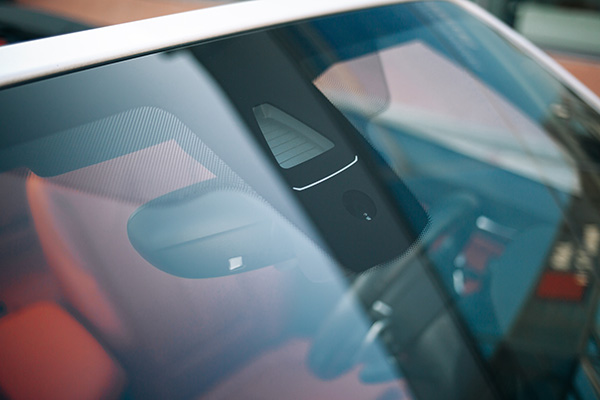
Mercedes-Benz vehicles are known for their comfort, technology, and refinement—and their rain-sensing wipers are a perfect example. You don’t have to touch a thing. As soon as rain hits the windshield, the wipers activate automatically and adjust their speed based on how heavy the rain is. It’s one of those features you don’t think about until you’ve experienced it—and then you don’t want to go without it.
But how exactly do these sensors know when to start wiping? The system isn’t magic—it’s carefully engineered to detect moisture and react in real time.
The Sensor Isn’t Outside—It’s Behind the Glass
Rain-sensing wipers rely on an optical sensor, which is usually mounted just behind the windshield near the rearview mirror. The sensor looks out through the glass, not exposed to the elements directly, which helps protect it from damage or contamination.
This sensor emits infrared light into the windshield at a specific angle. When the glass is dry, most of that light is reflected back into the sensor. When water droplets collect on the surface, some of the light is scattered or refracted. The sensor picks up on that change in reflection and sends a signal to the vehicle’s computer to activate the wipers.
The more water present, the more light is scattered—so the system knows to increase the wiper speed. When the rain lightens up or stops completely, the light pattern returns to normal, and the wipers slow down or turn off.
Adjustable Sensitivity for Driver Preference
Most Mercedes-Benz models with rain sensors allow you to adjust the system sensitivity using the stalk on the steering column. While you can’t set an exact speed, increasing the sensitivity makes the wipers respond to smaller amounts of water and react more quickly to changing conditions.
This is helpful in light mist or drizzle when you want more frequent wiping, or in situations like highway driving where water collects differently on the windshield.
If your sensor feels too aggressive or not responsive enough, adjusting this setting can usually improve the experience without needing a visit to the shop.
How It Helps In Real-World Driving
In heavy rain or unpredictable conditions, taking your hands off the wheel to adjust the wipers can be distracting. The rain sensor eliminates that step. It reacts faster than most drivers can, and it helps keep your focus on the road—especially during sudden downpours when visibility can change in seconds.
It's also useful for those in regions like Santa Rosa, CA, where quick weather changes are common. The system automatically adapts without you needing to fiddle with the controls every few minutes.
Plus, by adjusting the wiping speed only when needed, rain sensors can prolong the life of your wiper blades, avoiding unnecessary wear when the windshield is already clear.
What If It’s Not Working Properly
If your wipers aren’t reacting to rain or seem to turn on at random, the rain sensor could be dirty, misaligned, or damaged. A film of dust, oil, or wax on the windshield can interfere with the sensor’s ability to “see” clearly.
Sometimes, a recently replaced windshield can cause issues if the sensor wasn’t reinstalled correctly or the optical connection wasn’t secured properly. In rare cases, a software update or sensor recalibration may be necessary.
When the sensor fails completely, the system may default to manual control only—or the wipers may stop working altogether in auto mode.
A quick inspection by a trained technician can usually pinpoint the issue. In many cases, a simple cleaning or reseating of the sensor is enough to get it working again.
Trust CK Auto Exclusive in Santa Rosa, CA, for precision care and diagnostics tailored to your Mercedes-Benz—whether it’s rain sensors, advanced electronics, or routine maintenance.